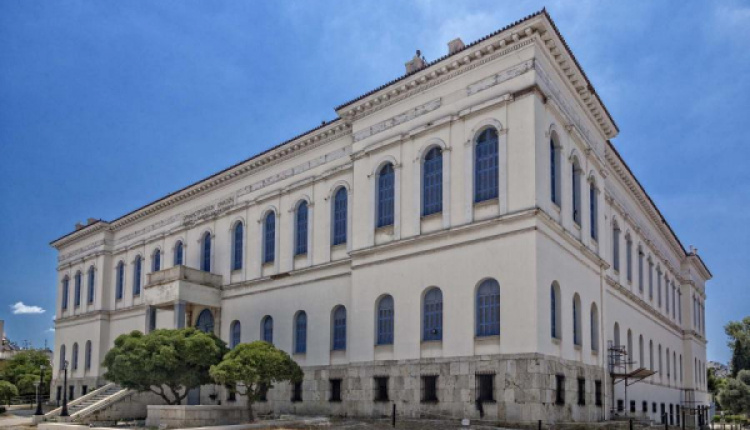Digital Guide Offers Architectural Walks In Piraeus
- by XpatAthens
- Tuesday, 08 November 2022

Piraeus just keeps getting more and more interesting. This year saw the opening of three new metro stations in Athens’ bustling port town, while last year, a section of the coastal tram line that follows a circular route around Piraeus was inaugurated. Now, a web-based cultural project called “Piraeus ArchWalks” aims to inform and engage the broader public in the architectural capital of the bustling port. Soon, the walks will also be shared in the form of a downloadable mobile app that connects with GPS.
“The main purpose is to highlight and promote the architecture of Piraeus as a new tourism product, as a cultural route,” write the project’s creators (namely the Municipality of Piraeus with Aegean Solutions SA and the Aikaterini Laskaridis Foundation), on the ArchWalks website. ArchWalks presents a comprehensive view of the city’s neoclassical heritage of the 19th century as part of the Virtual Tours of Piraeus program. The digitally interactive initiative includes four architectural walks starting at key locations that offer access to Piraeus, such as the ISAP metro station (green line).
“Piraeus has a rich offering of Architectural buildings and history and is the ideal place for developing a project like this,” says Alexandros Tzortzakakis, CEO of Aegean Solutions SA, located in Heraklion Crete. The company has established itself as a leading provider of “holistic solutions” in digital culture, social development and tourism, and was recently awarded the Gold Medal for Digital Tourism at the “Tourism Awards 2022” for the design and development of incrediblecrete.gr. “Similar projects have been developed in the past,” says Tzortzakakis, “but ArchWalks is different and innovative because it consists of 3D representations of selected buildings.”
The four walks cover four different zones, with photographs and informative texts for every architectural stop along the walk: the northeastern districts (with 32 architectural stops), northwest and west districts (37 architectural stops), south and southwest districts (37 architectural stops), and east districts (10 architectural stops).
Even without the app, by simply following the information on the website, architecture aficionados can traipse entire routes, or even just sections of them, regarding the buildings and landmarks listed. Apart from observing the architectural features of the included buildings, visitors can learn about Piraeus’ and Athens’ history, social culture, and industrial development.
The website also includes a Timeline of Piraeus that classifies the major historical phases and turning points represented by the town’s landmarks. It is described as “an interactive timeline about the port city that began to be built in the early 19th century on deserted ancient ruins, matured, reached its peak, declined towards the end of the 20th century, and seeks its rebirth in the early 21st century.” The Timeline begins with a map depicting “Long walls, 462-458 BC”, followed by “Ancient ship sheds of Zea, 4th century BC,” and concludes with “The port 1970 – 1985 AD”. (See the Timeline here.)
The “Piraeus ArchWalks” app is expected to be available within the next few weeks. For upcoming information on the app, check the Municipality of Piraeus website
To read this article in full, please visit: greece-is.com
“The main purpose is to highlight and promote the architecture of Piraeus as a new tourism product, as a cultural route,” write the project’s creators (namely the Municipality of Piraeus with Aegean Solutions SA and the Aikaterini Laskaridis Foundation), on the ArchWalks website. ArchWalks presents a comprehensive view of the city’s neoclassical heritage of the 19th century as part of the Virtual Tours of Piraeus program. The digitally interactive initiative includes four architectural walks starting at key locations that offer access to Piraeus, such as the ISAP metro station (green line).
“Piraeus has a rich offering of Architectural buildings and history and is the ideal place for developing a project like this,” says Alexandros Tzortzakakis, CEO of Aegean Solutions SA, located in Heraklion Crete. The company has established itself as a leading provider of “holistic solutions” in digital culture, social development and tourism, and was recently awarded the Gold Medal for Digital Tourism at the “Tourism Awards 2022” for the design and development of incrediblecrete.gr. “Similar projects have been developed in the past,” says Tzortzakakis, “but ArchWalks is different and innovative because it consists of 3D representations of selected buildings.”
The four walks cover four different zones, with photographs and informative texts for every architectural stop along the walk: the northeastern districts (with 32 architectural stops), northwest and west districts (37 architectural stops), south and southwest districts (37 architectural stops), and east districts (10 architectural stops).
Even without the app, by simply following the information on the website, architecture aficionados can traipse entire routes, or even just sections of them, regarding the buildings and landmarks listed. Apart from observing the architectural features of the included buildings, visitors can learn about Piraeus’ and Athens’ history, social culture, and industrial development.
The website also includes a Timeline of Piraeus that classifies the major historical phases and turning points represented by the town’s landmarks. It is described as “an interactive timeline about the port city that began to be built in the early 19th century on deserted ancient ruins, matured, reached its peak, declined towards the end of the 20th century, and seeks its rebirth in the early 21st century.” The Timeline begins with a map depicting “Long walls, 462-458 BC”, followed by “Ancient ship sheds of Zea, 4th century BC,” and concludes with “The port 1970 – 1985 AD”. (See the Timeline here.)
The “Piraeus ArchWalks” app is expected to be available within the next few weeks. For upcoming information on the app, check the Municipality of Piraeus website
To read this article in full, please visit: greece-is.com


